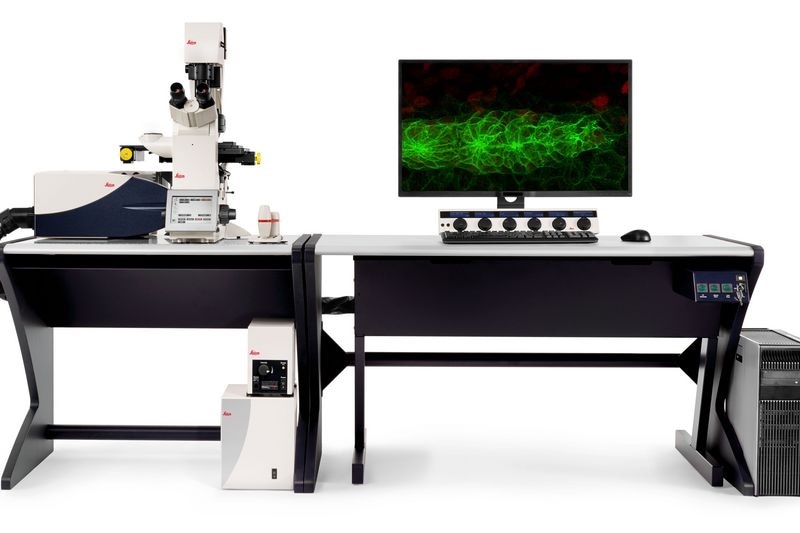World-leading designer and manufacturer of innovative microscope solutions, Leica Microsystems, has announced the launch of a new generation of its leading SP8 confocal microscope platform, now with built-in LIGHTNING detection technology. The next-generation SP8 LIGHTNING confocal microscope offers five highly sensitive detection channels for super-resolution live cell imaging in multicolor. As all channels operate in parallel, there is no trade-off between speed and resolution. This allows for simultaneous observation of fast biological processes in living cells.
 SP8 LIGHTNING confocal microscope
SP8 LIGHTNING confocal microscope
The SP8 platform was designed for high sensitivity allowing long recording times of your precious samples. With integration of the Leica-exclusive detection concept LIGHTNING, the detection limit achievable with the system has been further improved. This enables researchers to simultaneously trace fast dynamics of multiple molecules in living specimens, even those expressed at low levels. LIGHTNING marks a new level of image quality with super-resolution in all five channels, down to 120 nm, enabling researchers to resolve finest details in all color channels at once.
Markus Lusser, President of Leica Microsystems: “Our next-generation SP8 LIGHTNING confocal platform offers researchers new opportunities to decipher the role of molecules in their dynamic interaction in living organisms. A thorough understanding of the processes in living cells is the key to gaining greater insight into the mechanisms by which diseases develop, how they can be diagnosed at an early stage, and how they can be treated. We are delighted to help inspire research in this important field with our unique SP8 LIGHTNING solution.”
The SP8 LIGHTNING allows proper sampling over a specimen area that is at least six times larger than with any other confocal system, today. For easy navigation of complex samples, the LAS X Navigator software enables correlation of high resolution images with overview images. In addition scientists can combine and accommodate different research methods in the SP8 LIGHTNING ranging from confocal microscopy with super-resolution to STED nanoscopy. Methods such as multiphoton microscopy, lifetime imaging, light sheet imaging, or CARS can also be added, further expanding the research possibilities.